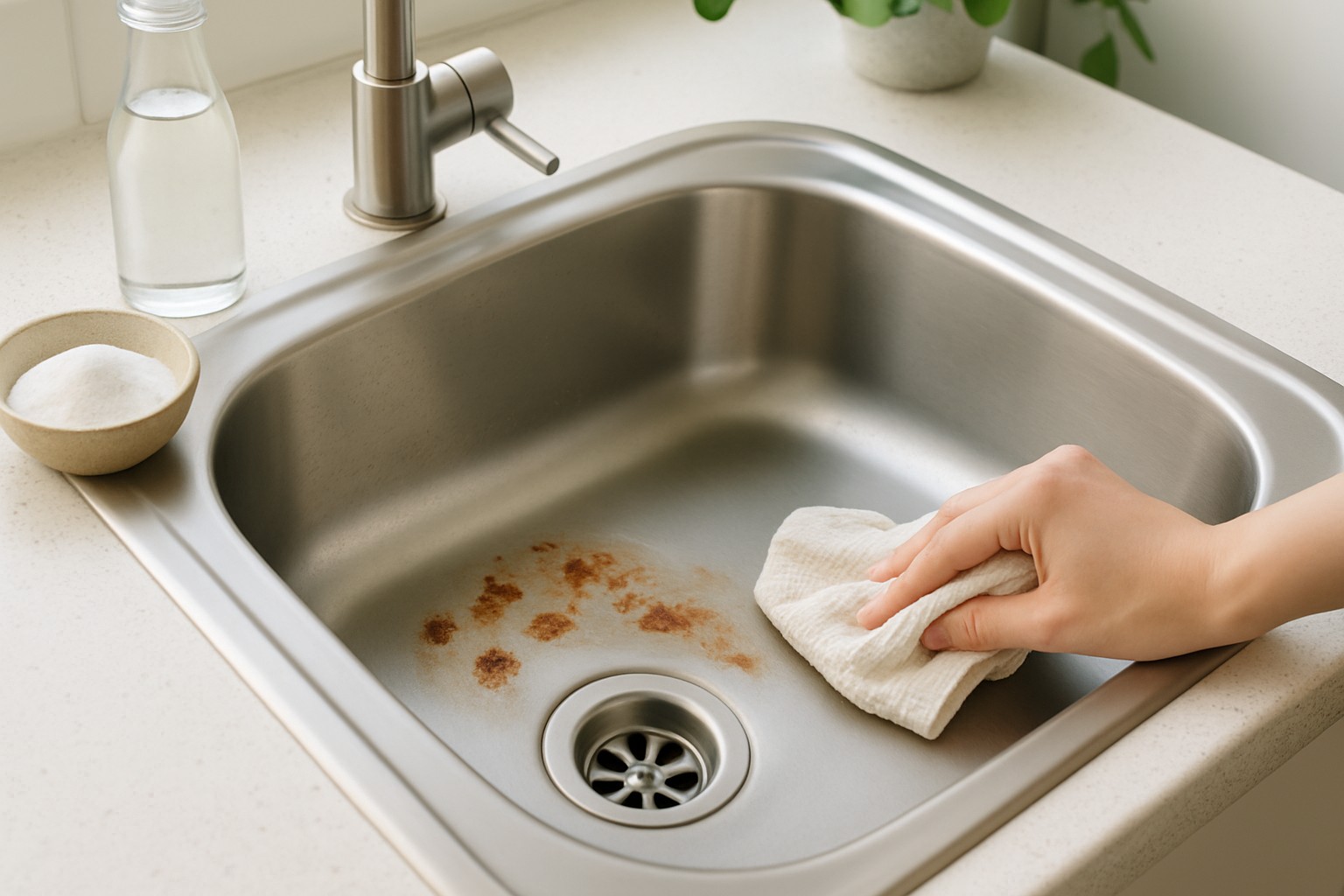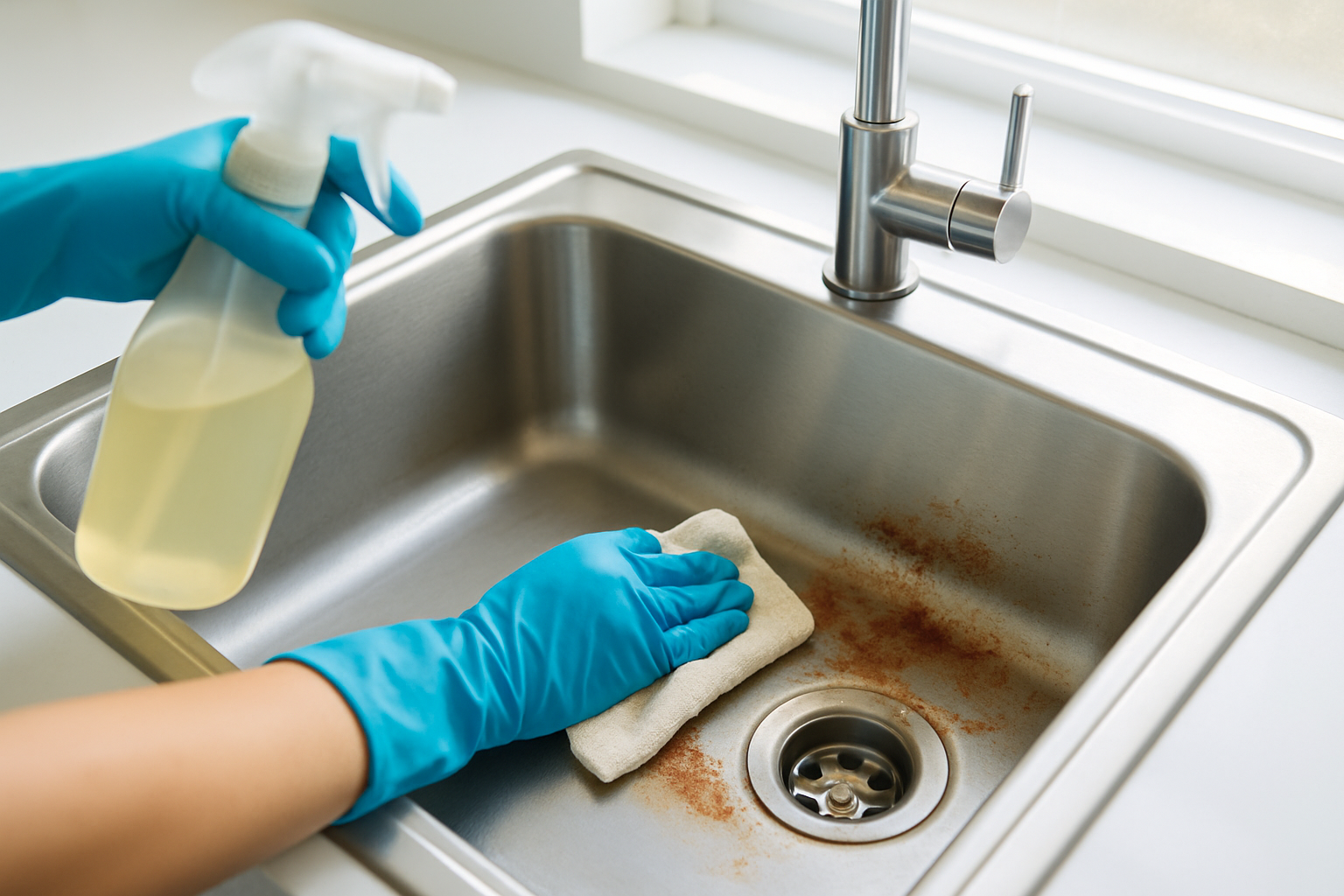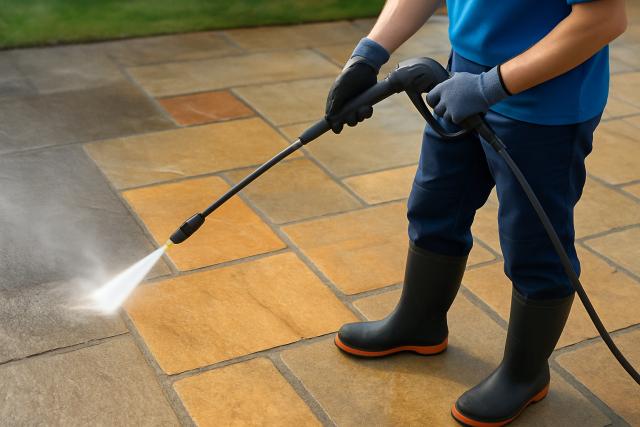Pressure Washing Stone Without Damage or Staining
Discover how to pressure wash stone surfaces safely, avoiding damage and staining. Our step-by-step...

In this piece we’ll walk you through how to banish rust stains from stainless steel sinks while keeping that surface smooth and scratch-free because no one wants a sink that looks worse for wear.
Learning how to clean rust from stainless steel sink can be surprisingly annoying especially since these sinks are supposed to shrug off corrosion like it’s no big deal. Rust can sneak in through surface scratches or stray iron particles or from hanging around too long in damp conditions or harsh chemicals. The trick is to get rid of that rust without adding new scratches. After all, you want to keep your sink looking sleek and its protective coating intact. This guide walks you through practical no-nonsense steps and safe methods to banish rust effectively.
Rust pops up when iron reacts with water and oxygen, forming iron oxide. Stainless steel is generally pretty good at dodging rust thanks to the chromium packed inside it. Even the toughest stainless steel can develop rust stains if tiny cracks appear or if it rubs against iron particles.
Prep your sink and keep safety front and center. Clear out any dishes or leftover gunk. Slip on some gloves to save your skin from nasty chemicals and make sure the area is nice and airy while you’re tackling those cleaners.
Cleaning rust off a stainless steel sink without leaving scratches takes a delicate touch and the right tools. Everyday staples like white vinegar, baking soda and lemon juice act as mild acids or gentle abrasives that tackle rust without going overboard. Pair those with soft microfiber cloths or nylon scrubbers that pack enough punch to do the job while still being kind to the surface.
| Material/Tool | Purpose | How to Use | Why It’s Safe for Stainless Steel |
|---|---|---|---|
| White Vinegar | Breaks down rust with mild acid | Either apply it straight on or soak a cloth and let it sit for 10-15 minutes—patience pays off here | Its gentle acidity is kind to stainless steel, so no worries about scratches or damage |
| Baking Soda | Mild abrasive and cleaner | Whip up a paste with water and gently scrub away using a cloth—think of it as a soft little scrub | The fine particles do their job without roughing up your finish, leaving it safe and sound |
| Soft Cloth/Microfiber | For cleaning and buffing | Perfect for applying solutions and drying—soft enough that it whispers to your surface | Those soft, non-abrasive fibers mean your stainless steel stays pristine and happy |
| Nylon Scrubber | Light scrubbing tool | Team it up with baking soda or vinegar to tackle those stubborn rust spots—it’s a tag team effort | Being non-metallic and gentle, it won’t leave a scratch or a scuff behind |
| Lemon Juice | Natural acidic rust remover | Apply juicy goodness, let it work its magic for 10-15 minutes, then give it a little scrub | Its mild acidity usually plays nicely with stainless steel, so you can relax while it cleans |
| Commercial Rust Removers | Rust removal products | Follow the instructions on the label to a T—these pros know what they’re doing | Made to be non-abrasive and safe, they treat stainless steel with the care it deserves |
Cleaning rust off a stainless steel sink can feel like walking a tightrope—you want it spotless without leaving a mark. But don’t sweat it; with a little know-how and gentle care, your sink can shine like new without a single scratch. Let’s roll up our sleeves and dive in, step by step.

Applying natural rust remover gently on a stainless steel sink to avoid scratches.
Following these tips really does the trick to keep your sink's smooth finish intact and steer clear of those pesky little scratches that might lead to rust spots down the line. Using gentle cleaning tools and mild agents is like giving the chromium layer a cozy shield—it’s what stands between your sink and corrosion. Taking care to clean along the grain not only respects the sink’s natural texture but also helps keep visible wear to a minimum.
Natural remedies like baking soda and vinegar provide a safe and wallet-friendly way to tackle pesky light rust stains. Commercial rust removers work faster and handle stubborn deeper rust better but you must be cautious not to damage the stainless steel surface.
| Product Type | Effectiveness | Safety on Stainless Steel | Cost | Ease of Use |
|---|---|---|---|---|
| Baking Soda & Vinegar | Pretty effective for light rust | Super safe and gentle on your metal | Budget-friendly | A no-brainer - just everyday pantry staples |
| Lemon Juice | Does a good job on mild rust spots | Safe enough as long as you don’t go overboard | Cheap as chips | Easy-peasy - natural, local, and hard to beat |
| Commercial Rust Removers | Tough on stubborn rust that won’t quit | Generally safe if you play by the rules | Can be a bit pricey | Requires a bit more care - handle with respect |
Keeping up with regular maintenance really does wonders for your sink's lifespan and helps keep pesky rust at bay. Learning how to clean rust from stainless steel sink properly can save you from those annoying stains - start by giving the sink a quick wipe-down after each use to cut down on lingering water spots, and remove items that are prone to causing rust. Using gentle cleaners and giving it a little polish every now and then keeps that corrosion-resistant chrome finish looking sharp.
23 posts written
Dashiell explores how cities shape human experience, combining architectural insights with sociological observations in thought-provoking pieces.
Read Articles
Discover how to pressure wash stone surfaces safely, avoiding damage and staining. Our step-by-step...

Explore Reykjavik like a local with this complete guide to free and affordable activities. From icon...

Explore the top travel adventure books that ignite the passion to wander, offering stories filled wi...

Discover what athletes representatives do, their critical responsibilities, and how they help athlet...
27 posts written
25 posts written
24 posts written
